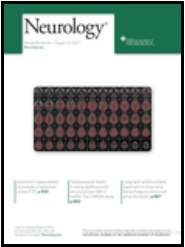 This open-label, pilot study determined whether ranolazine could improve signs and symptoms of myotonia and muscle stiffness in 13 patients with myotonia congenita (MC) who were assessed at baseline and 2, 4, and 5 weeks.
This open-label, pilot study determined whether ranolazine could improve signs and symptoms of myotonia and muscle stiffness in 13 patients with myotonia congenita (MC) who were assessed at baseline and 2, 4, and 5 weeks.
Ranolazine was started after baseline assessment (500 mg twice daily), increased as tolerated after week 2 (1,000 mg twice daily), and maintained until week 4. Outcomes included change from baseline to week 4 in self-reported severity of symptoms (stiffness, weakness, and pain), Timed Up and Go (TUG), hand grip and eyelid myotonia, and myotonia on EMG. Self-reported severity of stiffness (p < 0.0001) and weakness (p < 0.01) was significantly improved compared with baseline. TUG and grip myotonia times were reduced (p = 0.03, p = 0.01). EMG of the abductor digiti minimi and tibialis anterior showed significantly reduced myotonia duration (p < 0.001, p < 0.01) at week 4.
No participant discontinued ranolazine because of side effects.
Ranolazine appeared to be well tolerated over a period of 4 weeks in individuals with MC, and ranolazine resulted in improvement of signs and symptoms of muscle stiffness.
